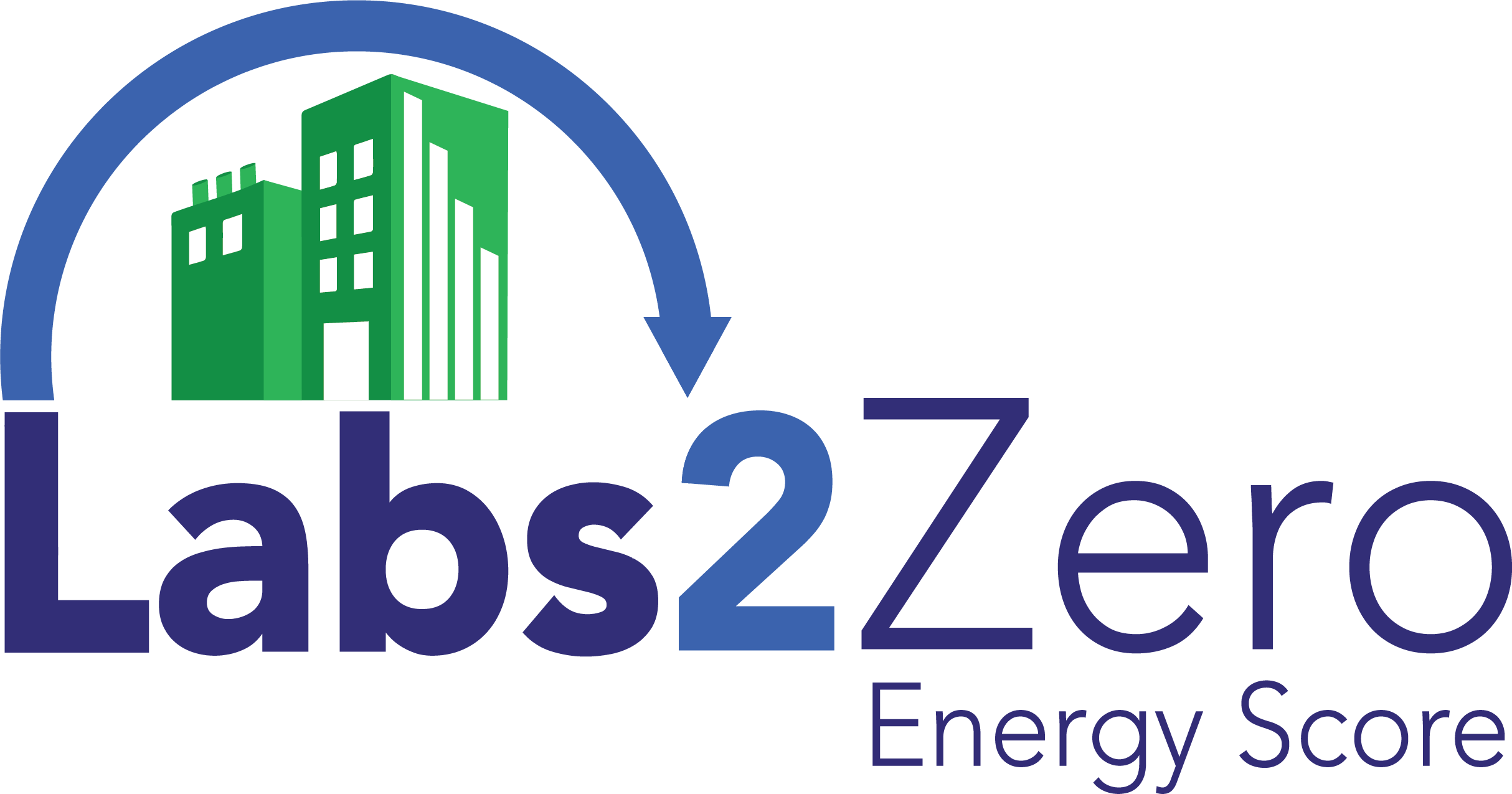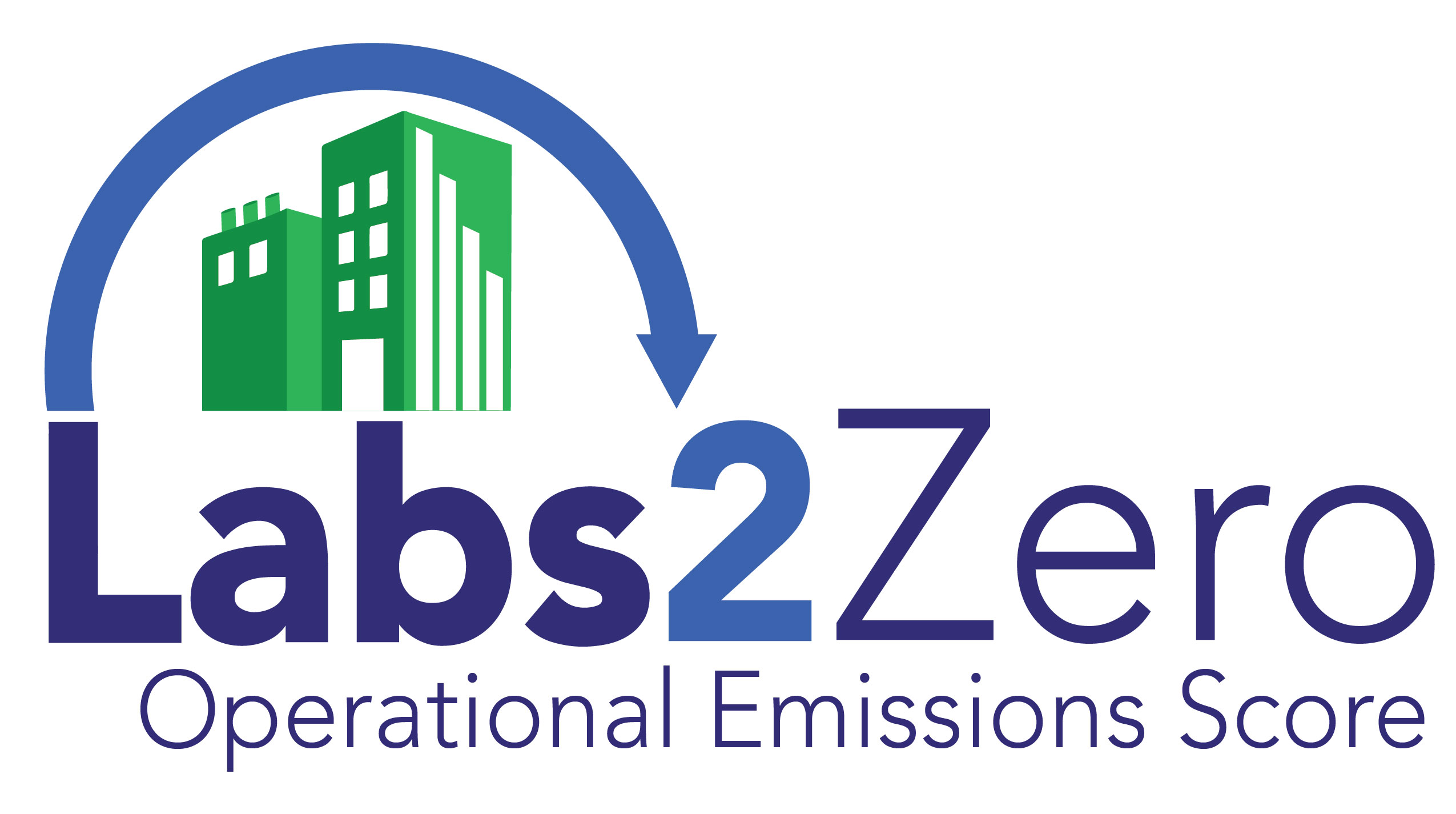Please try the new Global version of the AIM Report!
About The Labs2Zero Scorecard
The Labs2Zero program, a voluntary program created by I2SL, is dedicated to advancing the decarbonization of laboratories globally. The Scorecard is the first part of the Labs2Zero program to be released. With the release of the Energy and Operational Emissions Scores, lab buildings for the first time have a way of benchmarking their performance that's tailored to the patterns of use and needs of this important building category. The scores are currently in a pilot phase, in which we encourage all feedback from users to help us improve the scoring system's accuracy before the updated versions are released.
To get started using the LBT and obtaining Labs2Zero Scores, please read our LBT Quick Start Guide. You can also watch a recording of the I2SL Energy Score webinar or view the presentation slides here.
How the Scores Work
Each lab building's performance is rated from 1-100, where 100 represents the highest performance. Energy and Operational Emissions performance are rated separately, to give each building a pair of scores. Each rating is a percentile score, meaning that a building with a score of 85 has better performance than 85 percent of similar facilities. Brief descriptions of how each score works are provided below. Please also see the FAQs page for more information.
The Pilot Energy Score
 The Energy Score takes into account the functional requirements driving the energy
consumption of each lab building to calculate an energy "allowance." The allowance factors are based on an analysis
of the LBT's database, and include the amount of net lab space, lab type, hours of occupancy, and weather. The score
is generated by comparing this allowance with the actual annual energy consumption of the building. The pilot
scoring system was developed by Lawrence Berkeley National Laboratory in 2023, in collaboration with the Labs2Zero
Energy Score Technical Advisory Council. More details are available in the
Energy Score technical
white paper.
The Energy Score takes into account the functional requirements driving the energy
consumption of each lab building to calculate an energy "allowance." The allowance factors are based on an analysis
of the LBT's database, and include the amount of net lab space, lab type, hours of occupancy, and weather. The score
is generated by comparing this allowance with the actual annual energy consumption of the building. The pilot
scoring system was developed by Lawrence Berkeley National Laboratory in 2023, in collaboration with the Labs2Zero
Energy Score Technical Advisory Council. More details are available in the
Energy Score technical
white paper.
The Pilot Operational Emissions Score
 The Operational Emissions Score builds on the Energy Score methodology. It uses the same energy allowance as
the Energy Score, and then converts this into a greenhouse gas intensity (GHGI) allowance. The actual GHGI is
compared against this allowance in order to obtain the score. The pilot version of the Operational Emissions Score
relates to location-based emissions only, i.e. it uses local electric grid emissions factors and does not
take into account any market-based instruments an organization purchases in order to abate its carbon emissions. The
LBT dataset currently does not contain enough data on market-based behavior in order to develop a peer-based rating
system for market-based emissions, but I2SL intends to add this in future. The LBT started to collect market-related
data in Spring 2024, and we encourage our users to enter this data where available so that we can expand the scoring
system's applicability. The
pilot scoring system was developed by Lawrence Berkeley National Laboratory in 2024, in collaboration with the
Labs2Zero Operational Emissions Technical Advisory Council. More details are available in the Operational
Emissions Score technical white paper.
The Operational Emissions Score builds on the Energy Score methodology. It uses the same energy allowance as
the Energy Score, and then converts this into a greenhouse gas intensity (GHGI) allowance. The actual GHGI is
compared against this allowance in order to obtain the score. The pilot version of the Operational Emissions Score
relates to location-based emissions only, i.e. it uses local electric grid emissions factors and does not
take into account any market-based instruments an organization purchases in order to abate its carbon emissions. The
LBT dataset currently does not contain enough data on market-based behavior in order to develop a peer-based rating
system for market-based emissions, but I2SL intends to add this in future. The LBT started to collect market-related
data in Spring 2024, and we encourage our users to enter this data where available so that we can expand the scoring
system's applicability. The
pilot scoring system was developed by Lawrence Berkeley National Laboratory in 2024, in collaboration with the
Labs2Zero Operational Emissions Technical Advisory Council. More details are available in the Operational
Emissions Score technical white paper.
The Labs2Zero Scorecard is made available free of charge to LBT users thanks to the generous support of I2SL's Labs2Zero Sponsors. Scores have been generated for all buildings in our database with energy usage data. Each score is calculated separately for each year of data you provide, and it is updated automatically any time you update your data.
How to Help I2SL Improve the Labs2Zero Scores
During the pilot phase, I2SL welcomes all feedback on the Pilot Scores. We are particularly seeking feedback from users who have entered their buildings' data in the LBT and have obtained Pilot Scores.
For some kinds of lab buildings, the score is not yet well tuned because the peer group database does not yet contain enough data on these building types, including vivarium facilities, manufacturing laboratories, pilot plants, crime labs, and healthcare laboratory facilities. Submitting data to the LBT on these types of facilities during the pilot phase will greatly help I2SL improve the accuracy and applicability of the scoring system.
If you see a triangle symbol next to a Pilot Energy Score or Operational Emissions Score, this means that the score may not be accurate. This is typically because the specific building type is not yet well represented in the LBT peer group database, but may also be the result of a problem with data entry or with obtaining weather data for your site. Please click on the or on the building name for detailed information on the warning.
Please send all feedback on the Labs2Zero Pilot Energy Score or the LBT to lbt@i2sl.org.

